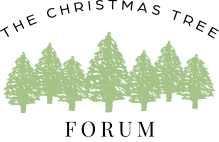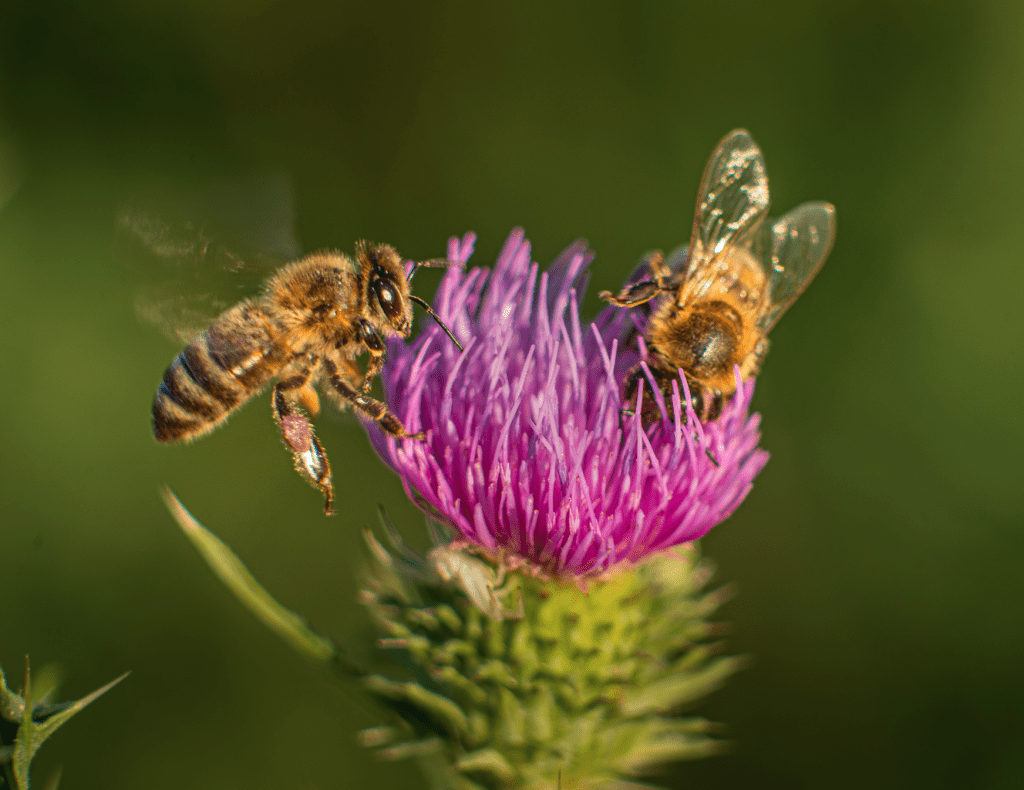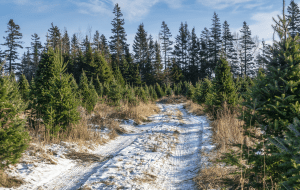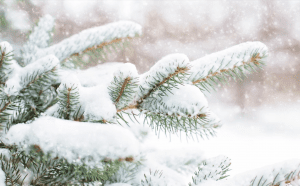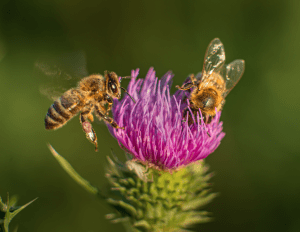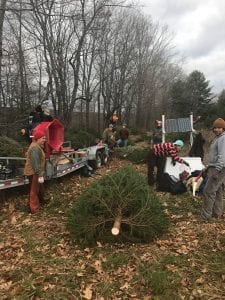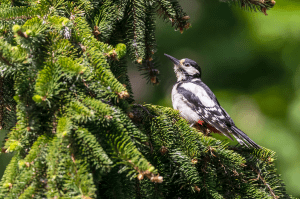It seems everyone’s into pollinators these days. Whether it’s saving honey bees or planting milkweed for Monarch butterflies, pollinators are in the news. But what does all of this have to do with Christmas trees?
Christmas tree growers can benefit from having land set aside for pollinators. It makes for great advertising with consumers wanting an environmentally friendly choice, but more importantly, the flowering plants that provide habitat for pollinators also support natural predators of common Christmas tree pests.
Flower pollen and nectar are food sources for our most important pest predators. The same flowers that attract bees and butterflies also attract lady beetles, hoverflies, and lacewings that are the main predators feeding on aphids and mites in your Christmas trees. Lady beetle adults and larvae both feed on other insects. And although hoverflies and lacewing adults don’t eat other insects, their larvae do, and the adults of these three species require pollen and nectar to reproduce and thrive.
Growers are lucky in western North Carolina, and other areas where Fraser fir is the main species grown. It is tolerant of low rates of glyphosate hitting bottom branches for much of the growing season. These low rates stunt rather than kill weeds, which results in a living ground cover around the trees with an incredible diversity of blooms to attract predators.
This regional recommendation for managing ground covers with low rates of glyphosate won’t necessarily work in other areas of the country where temperatures are hotter and where other Christmas tree species, that aren’t as tolerant of glyphosate, are grown. If this type of ground cover management doesn’t work in your situation, having field borders with flowering ground covers will achieve the same effect.
Incorporating flowering ground covers on farms isn’t a new idea. It’s the basis of farmscaping for beneficials.
Farmscaping is a whole-farm, ecological approach to pest management. It is defined as the use of hedgerows, insectary plants, cover crops, and water reservoirs to attract and support populations of beneficial organisms such as insects, bats, and birds of prey.
This type of farm management has been part of a national effort. The 2008 Farm Bill made pollinators and their habitat a priority for the USDA and the 2014 Farm Bill built these programs further. The Natural Resources Conservation Service (NCRS) through the Environmental Quality Incentive Program (EQIP) promotes these conservation efforts. In many areas, cost-share money is available for establishing high-quality pollinator habitat and nesting areas for native bees while also supporting pest predators.
With the recently piqued interest in pollinators, adding flowering field borders has never been easier. There are many seed mixes, often specific to different regions of the country, available for sowing that will bring in needed predators. The Xerces Society has created plant lists for different areas of the US:
https://xerces.org/pollinator-conservation/pollinator-friendly-plant-lists

If establishing these field borders is too expensive, a very low-cost way to establish field borders is to let areas grow up and only mow every 2 or 3 years.
Research conducted in North Carolina has indicated that weeds with stems such as briars, goldenrod, and even horse nettle make great habitat for predatory mites found in Christmas trees. (Logan Williams, 2008, Predatory Mites in Fraser fir Christmas Tree Plantations in the Southern Appalachians of North Carolina, Ph.D. Thesis, North Carolina State University).
Even though most of the flowers will be long gone by the time Christmas trees are harvested, you should still advertise with your customers the fact that you are providing a habitat for pollinators and encouraging natural predators. Post pictures of pollinators on your website, blogs, or Facebook and Instagram accounts.
If you have a choose and cut farm, put up signs denoting pollinator or Monarch butterfly gardens. This type of environmental advertising is especially important for appealing to millennials, as countless reports have found that millennials are attracted to eco-friendly, sustainable products.
If your farm brings in visitors at other times of the year besides Christmas, flowering borders can add farm income.
Flowering borders can be a draw for school groups, can be harvested for the sale of cut flowers, and will also be appreciated as a backdrop by photographers. Sunflower mazes or playrooms will attract both human and insect visitors, and birding trials can also be incorporated to add to contribute to an environmental agri-tourism theme.
To maximize the positive impact on pollinators and predators alike, the following are some simple guidelines:
- Ensure flower borders are planted in full sun.
- Locate flowering borders throughout your farm. The closer these habitat islands are, the more likely predators will be able to move into your Christmas trees to reduce pest problems.
- Maximize diversity. Try to have something blooming throughout the growing season. When possible, have 3 species blooming during each season – spring, summer, fall, and even winter in southern regions.
- Flowers clustered in clumps of one species will attract more beneficial insects than individual plants scattered here and there.
- Don’t forget to add native grasses. These are important for providing habitat as well.
- Keep insecticides out. The goal is to let nature take its course in these habitat areas.
So ‘bee’ the change your eco-aware customers want you to be. Provide habitat for pollinators and reap the rewards of increased natural predators in your Christmas trees!
To hear more from this contributor, Dr. Jill Sidebottom, please join The Balsam Fir Forum where Dr. Jill provides valuable instructions for Integrated Pest Management.
Dr. Jill R. Sidebottom, Mountain Conifer IPM Specialist, North Carolina Cooperative Extension, reprinted from the CTCNS Journal V32-N
